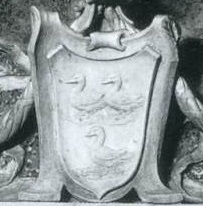
Piazza del Plebiscito is a large public square in central Naples, Italy.

Vomero is a bustling hilltop district of metropolitan Naples, Italy — comprising approximately two square kilometres (0.77 sq mi) and a population of 48,000.

Raffaele Viviani was an Italian author, playwright, actor and musician. Viviani belongs to the turn-of-the-century school of realism in Italian literature, and his works touch on seamier elements of the lives of the poor in Naples of that period, such as petty crime and prostitution. Critics have termed Viviani "an autodidact realist," meaning that he acquired his skills through personal experience and not academic education.

Arenella is a quarter of Naples, southern Italy. It is on the Vomero hill above the city and was, 300 meters in elevation. Many years ago was considered a place to go to "get away from it all". It is near to the main hospital section of the city, set somewhat higher, on the way up to the Hermitage of Camaldoli. It has some points of historic interest, such as the presence of the workshop of Giambattista della Porta.
Barra is an eastern quarter of Naples, southern Italy, with a population of some 40,000 inhabitants

The Four Days of Naples was an uprising in Naples, Italy, against Nazi German occupation forces from September 27 to September 30, 1943, immediately prior to the arrival of Allied forces in Naples on October 1 during World War II.

Line 1 is an 18.8-kilometre (11.7 mi) rapid transit line, part of the Naples Metro in Naples, Italy. As of July 2023, Line 1 connects 19 stations. It is operated by Azienda Napoletana Mobilità SpA (ANM). The line has been renamed Metrò dell'Arte reflecting the presence of contemporary art works installed in some of its stations.
The Liceo Ginnasio Statale "J. Sannazaro", commonly called the Liceo Sannazaro, is a co-educational state secondary school in the Vomero hill quarter of Naples. The c. 1,200 pupils are drawn from across the Neapolitan urban area, although preference is given to children from Vomero and the adjacent Arenella quarter. As a liceo classico it offers a traditional classical curriculum with a strong concentration on Italian, Latin and Greek. Alternative syllabi are available for some degree of specialisation in foreign languages, mathematics and computer science, or history of art.

Guappo is a historical Italian criminal subculture and informal term of address in the Neapolitan language, roughly analogous to or meaning thug, swaggerer, pimp, braggart, or ruffian. While today the word is often used to indicate a member of the Camorra, a Mafia-type organisation in the region of Campania and its capital Naples in Italy, the guapperia predates the modern Camorra and was originally a different and separate criminal subculture that considered itself very much independent of the Camorra.

Francesco "Ciccio" Cappuccio, also known as 'O Signorino for his elegant manners, was a legendary guappo and the capintesta (head-in-chief) of the Camorra, a Mafia-type organisation in Naples in Italy, in the last half of the 19th century. He is credited with modernizing the Bella Società Riformata as the Camorra was known then. The mythicization of his person mixes fact, fiction and legend, not least because of the journalism at the time.

Fausto Cigliano was an Italian singer, guitarist, and actor.

The Palazzo Zevallos Stigliano is a Baroque palace located on Via Toledo number 185 in the quartiere San Ferdinando of central Naples, Italy. It is also called the Palazzo Zevallos or Palazzo Colonna di Stigliano, and since 2014 serves as a museum of artworks, mainly spanning the 17th through the early 20th centuries, sponsored by the Cultural Project of the bank Intesa Sanpaolo. This museum is linked to the Museum or Gallerie di Piazza Scala in Milan and the Museum at Palazzo Leoni Montanari in Vicenza, also owned by the Bank.
Giuseppe Chirico, also known as o' Granatiere, was an Italian boss of the Camorra, a Mafia-type organisation in Naples in Italy, at the end of the 19th century.

The Colli Aminei are an area of Naples, Italy that is part of the municipality of Stella-San Carlo at the Arena, specifically of the Stella district. It is bordered to the west and north by the Vallone di San Rocco, to the east by the Capodimonte ascent, to the south by the valleys of the Scudillo and the Fontanelle.

The Villa Carafa of Belvedere, formerly known as Palazzo Vandeneynden, and also known as Villa Belvedere, is a monumental villa in Naples, located in the hilly Vomero district. The villa was commissioned by the powerful magnate, nobleman and art collector Ferdinando Vandeneynden, also known as Ferdinand van den Eynde, from the Carthusian architect Bonaventura Presti.

Ferdinand van den Eynde, 1st Marquess of Castelnuovo was an Italian nobleman and magnate of Flemish descent. He was the son of Jan van den Eynde, and the father of Elisabeth van den Eynde, Princess of Belvedere and Baroness of Gallicchio and Missanello and Jane (Giovanna) van den Eynde, Princess of Galatro and Sonnino. He should not be confused with his namesake and uncle Ferdinand van den Eynde.

Elisabeth van den Eynde, Princess of Belvedere and suo jure Baroness of Gallicchio and Missanello was an Italian noblewoman. She was the consort of Carlo Carafa, 3rd Prince of Belvedere, 6th Marquess of Anzi, and Lord of Trivigno, and the daughter of Ferdinand van den Eynde, 1st Marquess of Castelnuovo and Olimpia Piccolomini, of the House of Piccolomini. Her grandfather was Jan van den Eynde, a wealthy Flemish merchant, banker and art collector who purchased and renovated the Palazzo Zevallos Stigliano in 1653. Her father Ferdinand, the Marquess of Castelnuovo, built the Vandeneynden Palace of Belvedere between 1671 and 1673. While the Palazzo Zevallos in central Naples passed to her elder sister Giovanna, who married a Colonna heir, Elisabeth was given the monumental Palazzo Vandeneynden, alongside a smaller portion of the Marquess' assets, which included his art collection, one of the largest and most valuable in Naples and its surroundings. Upon her marriage to Carlo Carafa, the Vandeneynden Palace came to be known as Villa Carafa.

Marquess of Castelnuovo was a title in the neapolitan nobility that was created in the late 17th century for Ferdinand van den Eynde, 1st Marquess of Castelnuovo. The marquessate was purchased by the Flemish magnate Jan van den Eynde, at the time one of the wealthiest men in the city of Naples, for his son Ferdinand. Ferdinand married Olimpia Piccolomini, of the House of Piccolomini, by whom he had three daughters. Thanks to the marriage of his heir apparent Giovanna to Giuliano Colonna, the title was inherited by Giovanna's son, Ferdinando Colonna. The title was held for nine generations by the Colonna, before losing statutory regulation and lawful recognition upon the establishment of the Italian Republic, wherein aristocratic titles are neither recognized nor protected, peerage titles having "no value whatsoever" outside that of any other sobriquet.

Medaglie d'Oro is a station on line 1 of the Naples Metro. It was opened on 28 May 1993 as part of the inaugural section of Naples Metro, between Vanvitelli and Colli Aminei. The station is located between Vanvitelli and Montedonzelli.

The history of cinema in Naples begins at the end of the 19th century and over time it has recorded cinematographic works, production houses and notable filmmakers. Over the decades, the Neapolitan capital has also been used as a film set for many works, over 600 according to the Internet Movie Database, the first of which would be Panorama of Naples Harbor from 1901.



















